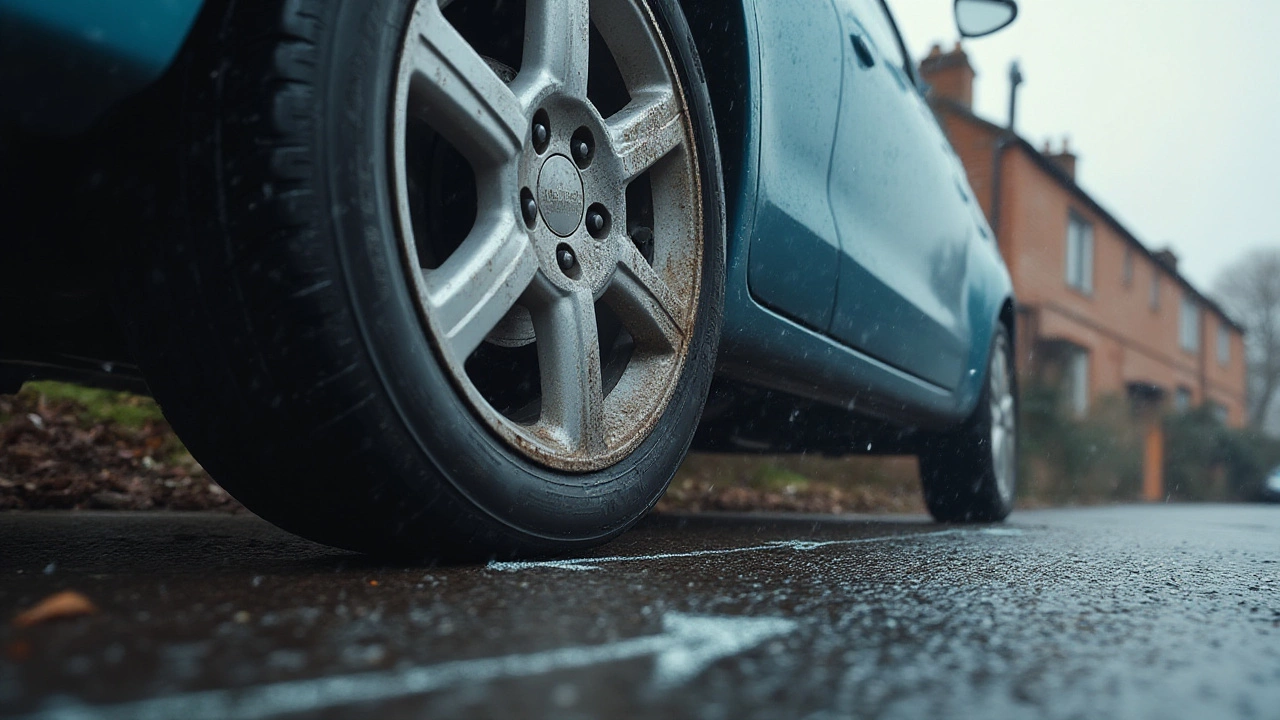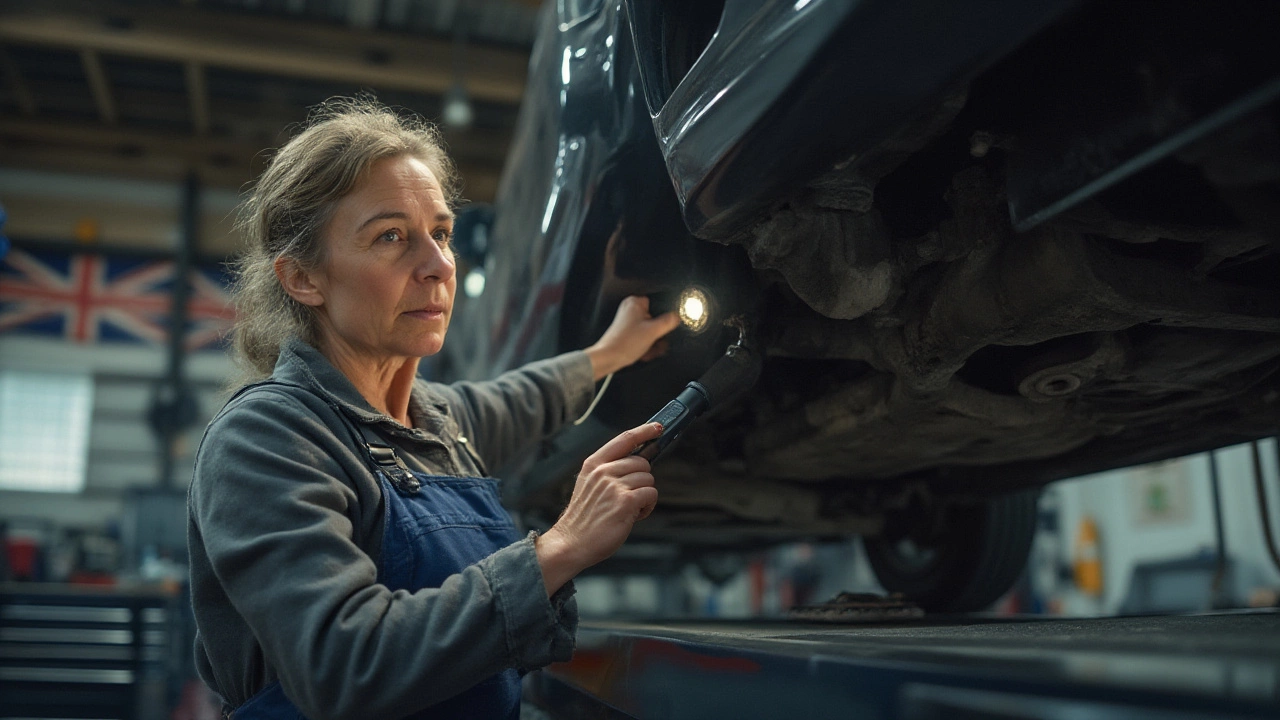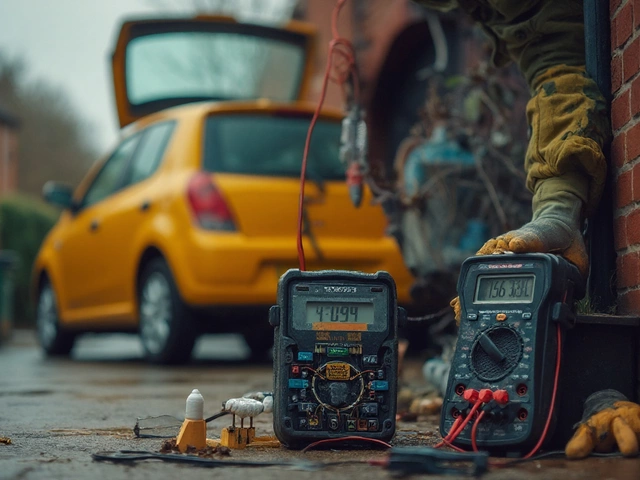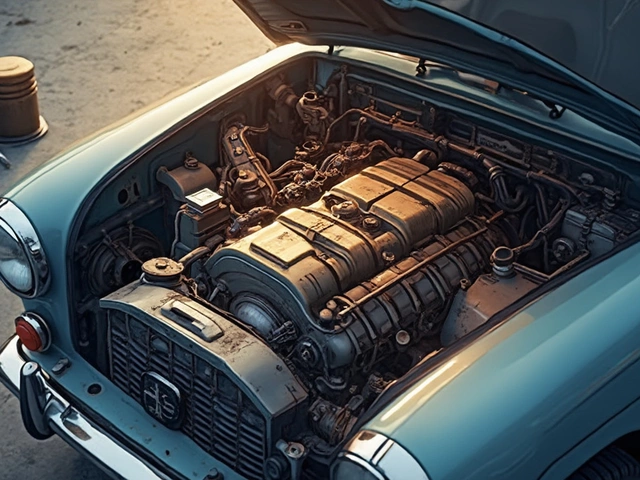If you're driving along and each bump feels like a pothole from hell, that's not just road rage talking—your car's suspension might be waving a white flag. Here’s the thing: most drivers take their car’s ride for granted until every commute turns into a rollercoaster. It’s easy to ignore the suspension until it gets personal with squeaks, wobbles, and downright scary handling. Some folks think suspension problems happen overnight, but that’s rarely the case. Usually, symptoms creep up in sneaky ways. But if you know what to look for, you won’t end up with a busted back or a big repair bill. Let’s get down to the dirt and talk real signs you actually need new suspension parts.
Key Warning Signs of Suspension Trouble
Spotting suspension problems isn’t rocket science, but you need to know the classic giveaways. First up: excessive bouncing. Does your car bounce more than once after hitting a speed bump? Next, listen up for odd noises. Squeaks, clunks, or bangs—especially when turning or going over bumps—are never just "normal aging." Suspension is supposed to buffer these sounds, so if it’s complaining loudly, that’s a red flag.
Let’s talk steering. Ever feel like your steering wheel has a mind of its own, pulling left or right on straight roads? That could be trouble with your shocks or struts. If you try to brake and the car nosedives like a pelican after a fish, that’s another classic sign. And body roll—when the car leans wildly during turns—is a symptom most drivers catch when they feel like they’re about to spill their coffee every time they take a corner.
Check your tires. Uneven wear patterns tell you way more than any dashboard light. When one side of your tire is nearly bald while the other side looks fresh, blame the suspension for failing to keep the wheels planted. And yes, you’ll sometimes notice leaking fluid near the wheels—oil seeping out of your shocks or struts is an SOS for a replacement. In some cases, the car actually sits lower on one side. This is especially common if a spring has snapped or sagged. If your car feels like it’s floating or wallowing on the highway, that “loose” feeling is often worn suspension components letting the body drift around. That lack of stability isn’t just uncomfortable; in an emergency, it’s dangerous.

Why Suspension Problems Are A Huge Deal
Let’s face it, suspension doesn’t grab headlines like airbags or engines, but it’s your unsung safety hero. Your shocks and struts aren’t just about comfort; they keep your tires glued to the road. Bad suspension means your tires lose grip, especially in the rain or on gravel. That's why so many accidents during bad weather can be traced back to poor suspension. If your shocks are finished, stopping distances can actually increase. Studies by the National Highway Traffic Safety Administration show that a worn suspension can add several feet to your stopping distance, especially if your car dips forward when you slam on the brakes.
Ever driven at night and struggled to keep your headlights pointing straight? Saggy suspension throws off your aim, making it harder to see and be seen. It also wears out other parts faster. Your tires, for one, will have a rougher life. Even your brakes and steering components are forced to work overtime if your suspension isn’t up to the job. If you're noticing more creaks and rattles in the rest of the car, weak suspension might be sending vibrations right into your frame. That can loosen bolts or even crack vital parts if left unchecked. Then there’s the wallet side of things: delaying suspension repairs drives up the cost in the long run, because you swap out not just shocks but tires, bearings, and sometimes other suspension arms that have been stressed to the breaking point. Remember, the suspension is actually a whole system—springs, shocks, struts, bushings, and arms all work together. If you change out one part and ignore the rest, you’re just kicking the can down the road. Some newer cars even use adaptive or air suspension systems, and if those go, replacement costs can get ugly. The longer you wait, the more it hurts—both your car and your bank account.

Testing Your Car’s Suspension at Home
You don't need a mechanic’s uniform to check for suspension problems. One easy trick: the bounce test. Park the car, push down hard on the hood, then let go. Does the car bounce more than once or twice? Time to start thinking about replacements. Check each corner—sometimes just one side is shot. Take a pencil flashlight and peek under the wheel arches. Look for leaking fluid around the shock or strut housing. If something is shiny or oily, it’s likely not just water from the last rainstorm.
Inspect your tires again—look for cupping (wavy, scalloped patterns) or bald spots. That’s classic for bad shocks. Run your hand over the tread; if it feels lumpy or uneven, think suspension. If your driveway is flat, step back and look at your ride height from a few steps away. Does one corner ride lower than the rest? Springs could be the culprit.
Take the car for a short drive. Listen for steering complaints—the wheel should return smoothly to center after a turn, not fight back or feel loose. Try braking suddenly in a safe spot. Excess pitch forward or a feeling like the rear end floats up could mean worn out shocks. Turn the wheel firmly left and right at low speed. Too much lean or any squealing? You guessed it, the suspension is hungry for attention.
If you’ve got a friend handy, have them walk alongside as you drive over a small speed bump. They can spot if any wheels "bounce" extra or seem disconnected from the body. Some folks notice a weird drifting sensation like the car is floating side to side on highways—another sign it’s time to look at shocks or bushings. For folks with high-mileage cars or regular heavy loads (think hauling tools, kids, camping gear), schedule these home tests several times a year. Usually, most shock absorbers and struts last about 50,000 to 80,000 miles, but bad roads or heavier use can shorten that drastically. Electric vehicles aren’t immune either—weight from batteries adds extra stress to the suspension, so symptoms can show earlier.
If you spot two or more symptoms together—noise, bounce, uneven tire wear, and that floating feeling—it’s almost certain that you need new suspension. Don’t guess or wait for total failure. Bad suspension goes from annoying to dangerous faster than people expect. Save your ride and sanity by tackling it early!
Car suspension isn’t something you want to mess around with. Catch those signs early, and you’ll keep your drives smooth, safe, and controlled—just the way your car was built to be.




